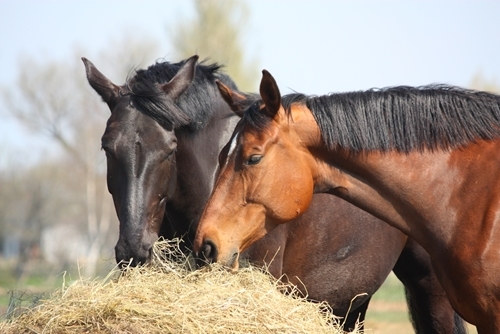With their sense of empathy and overall perceptiveness, horses are said to equal humans in sheer emotional range, Newsday reported. And like humans, horses use those abilities in order to make connections with their social circle, or as we’d more plainly call it, their herd.
Yet these groups of horses aren’t always so harmonious, especially when a new horse is tossed into the mix. A fresh mare or stallion can throw off the existing dynamic, challenging ways in which the horses communicate and naturally rely on one another. In the same way a person might attempt a few socialization exercises, there is plenty that you as a trainer can do in order to facilitate a successful introduction of a new horse.
Know your existing herd
Whenever a new horse is introduced, there’s going to be a lot of competition, which inevitably leads to aggression. Speaking with Equus magazine, veterinarian Dr. Katherine Houpt said that lower-rung horses will often look at a new horse as a means to move up the social ladder. As such, it’s important to understand the dynamics of the herd before this latest addition. Who is the leader? Who are the least aggressive horses? Which horses, if any, have been shed-kept for most of their lives? These are a number of factors as they will help decide which horses should meet first. If there is an especially aggressive horse, it might be a good idea to separate it from the others and then focus on that interaction at a later date. As well, if two horses seem to get along exceptionally well, do your best to encourage that dynamic, as it’s vital for the horses’ well-being.
Prepare your barn and pen
As an extension of that competitiveness, new horses will often undergo a hazing period, according to Equus magazine. This often means that a new horse might be cornered by the existing herd and either taunted or physically injured. It’s your job, then, to try and prevent this kind of behavior, and one of the best ways is by preparing the physical space. To begin, try and block off any sheds or other dead-end spaces that the new horse could be cornered into. From there, make sure there’s always a route you can escort the horse through in case there’s ever a confrontation. The new horse should also spend its first couple days or so in a separate paddock. This not only reduces the risk of run-ins, but also gives the existing herd some piece of mind. Though not related to the barn or pen specifically, some trainers will also remove the horses’ shoes as to minimize damage from kicking, including to any structures.
Always control access
In the same way that there’s a protocol when humans first meet – solid eye contact and firm handshakes – horses also make use of specific greetings and gestures. Before that occurs, you’ll need to ensure that the horses see one another. This will help acclimate them to one another and give them an idea of what’s actually going on. From there, once they’ve reacted without aggression, the horses will then sniff each other’s faces and blow air into one another’s nostrils, a sign of socialization according to the ASPCA. However, don’t let the horses intertwine necks or rub their heads together, as you need to try and facilitate a more gradual introductory process. Once you’re secure with these initial interactions, you can then let the horses touch each other. Oftentimes, the best way to control these little meetings is by conducting them between fences and separate pens.
Some fighting is natural
The hope of most trainers is that horses will interact properly from their very first introduction. Even if that is the case, that doesn’t mean that subsequent interactions will be as peaceful. Horses might be playing and frolicking one second, and something might happen that could lead to a confrontation. It might have been the perception of a threat, or one horse simply bumping into the other. Either way, biting, kicking and chasing will occur, and there’s very little you as the trainer can do to prevent it entirely. Instead, try and do your best to intervene as quickly as possible and separate the horses. For added protection, make sure the horses have enough running space to get away from each other, and that any fencing can maintain the added strain of this extra rowdy behavior.








